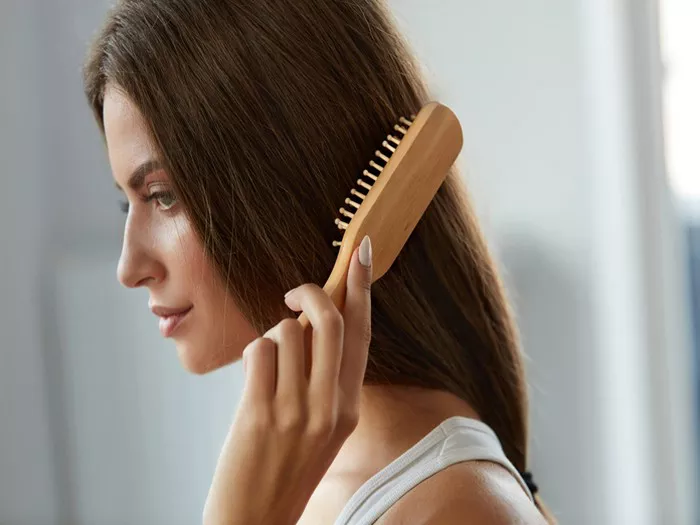Have you ever experienced that frustrating moment when your hair seems to have a mind of its own, standing on end and clinging to everything? This phenomenon, known as static hair, is a common concern that many individuals face. Whether you’re wearing a cozy sweater or just trying to style your hair, static hair can be a real nuisance. In this article, we’ll delve into the reasons behind why your hair is getting static and provide you with effective solutions to tackle this pesky issue.
Does hair generate static electricity?
Hair can generate static electricity due to its insulating properties and friction. When two objects rub against each other, like hair against clothing or a comb, electrons can transfer from one surface to another. This can lead to an imbalance of charges, resulting in static electricity buildup. Dry conditions can exacerbate this effect. The static charge can cause hair strands to repel each other, leading to flyaways and frizz. Using products designed to reduce static, like hair conditioners or anti-static sprays, can help manage this issue by neutralizing the charge.
What troubles does static electricity in hair cause us?
Static electricity in hair can cause several troublesome issues:
1. Flyaways and Frizz:
Static can make hair strands repel each other, leading to flyaways, frizz, and an overall unruly appearance.
2. Unwanted Volume:
Hair charged with static may stand away from the scalp, creating unwanted volume and disrupting hairstyle.
3. Difficult Styling:
Static can make it challenging to style hair as desired, especially when using heat tools or trying to achieve a smooth look.
Managing static with proper hair care, anti-static products, and moisture can help mitigate these troubles and maintain a well-groomed appearance.
Causes of static electricity in hair
Static electricity in hair is caused by the transfer of electrons between different materials, leading to an imbalance of charges. Several factors contribute to static electricity in hair:
1. Friction:
When hair rubs against other materials like clothing, hats, or brushes, electrons can transfer, resulting in a buildup of static charge.
2. Dry Air:
Dry air, especially in colder months or heated indoor environments, reduces the conductivity of the air. This increases the likelihood of static electricity buildup in hair.
3. Hair Type:
Fine and straight hair is more prone to static than coarse or curly hair due to the smoother hair cuticle, which allows for easier electron transfer.
4. Synthetic Fabrics:
Wearing clothing made from synthetic materials can create more friction and static, especially when it comes into contact with hair.
5. Combing and Brushing:
Brushing or combing dry hair can cause friction and contribute to static electricity.
6. Lack of Moisture:
Hair lacking moisture can have an increased propensity for static buildup. Dry hair cuticles allow for easier electron movement.
7. Hair Products:
Some hair products, especially those with alcohol or harsh chemicals, can strip moisture from hair, making it more susceptible to static.
To minimize static electricity in hair, use anti-static products, conditioners, and moisturizing treatments. Wearing natural fiber clothing and using wooden or natural bristle brushes can also help reduce friction. Humidifying indoor spaces can counteract dry air.
Anti-Static Techniques
Now that you understand the various factors contributing to static hair, let’s explore some effective anti-static techniques to regain control over your unruly locks.
1. Humidifiers:
Invest in a humidifier to add moisture to the air in your home. This can help combat the dryness that leads to static hair, especially during the colder months.
2. Fabric Softener Sheets:
Rubbing a fabric softener sheet over your hair can help neutralize static. Keep a sheet in your bag or pocket for a quick fix when you’re on the go.
3. Natural Bristle Brush:
Opt for a natural bristle brush when detangling your hair. These brushes are gentle on the hair and help distribute natural oils from the scalp, reducing the likelihood of static.
See Also: Why Did My Wavy Hair Turn Straight: The Secret to Hair Change
Conclusion
Static hair might be a common annoyance, but armed with knowledge about its causes and prevention strategies, you can take proactive steps to minimize its impact. By addressing environmental factors, modifying your hair care routine, understanding your hair type, maintaining moisture balance, and employing anti-static techniques, you can say goodbye to unruly hair and hello to a smoother, more manageable mane. Remember that everyone’s hair is unique, so feel free to experiment with different strategies until you find the combination that works best for you.


